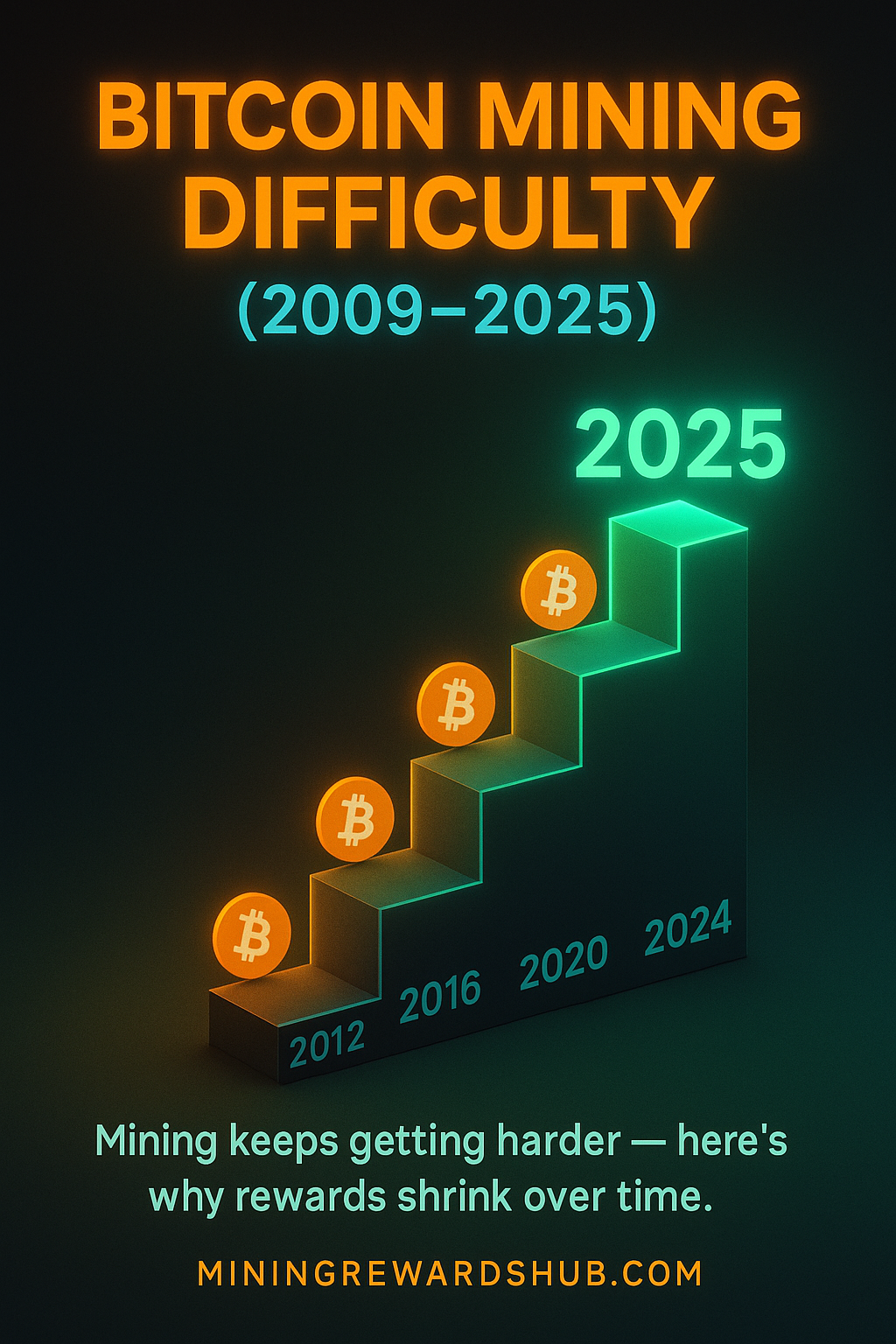
Why Difficulty Keeps Rising
Every time more miners compete on the network, Bitcoin adjusts its difficulty upward to keep block times stable at around 10 minutes. This ensures a predictable supply but makes mining increasingly competitive.
What It Means for Miners
Rising difficulty means miners need either more efficient hardware or a transparent way to add hashrate (e.g., trusted cloud mining). Always verify fees, payout thresholds, and live tracking before allocating capital.
Track Live Difficulty and Rewards
Use our dashboard to see today’s difficulty and how it impacts your rewards.
Go to MiningRewardsHub Dashboard →Frequently Asked Questions
What is Bitcoin mining difficulty?
It’s the measure of how hard it is to find a valid block hash. The higher the difficulty, the harder it is to mine rewards.
Why does Bitcoin mining difficulty increase?
Difficulty increases as more miners join the network, ensuring block times stay consistent at around 10 minutes.
How does difficulty affect rewards?
Higher difficulty reduces the odds of mining a block. Unless you scale your hash power, your share of rewards decreases.